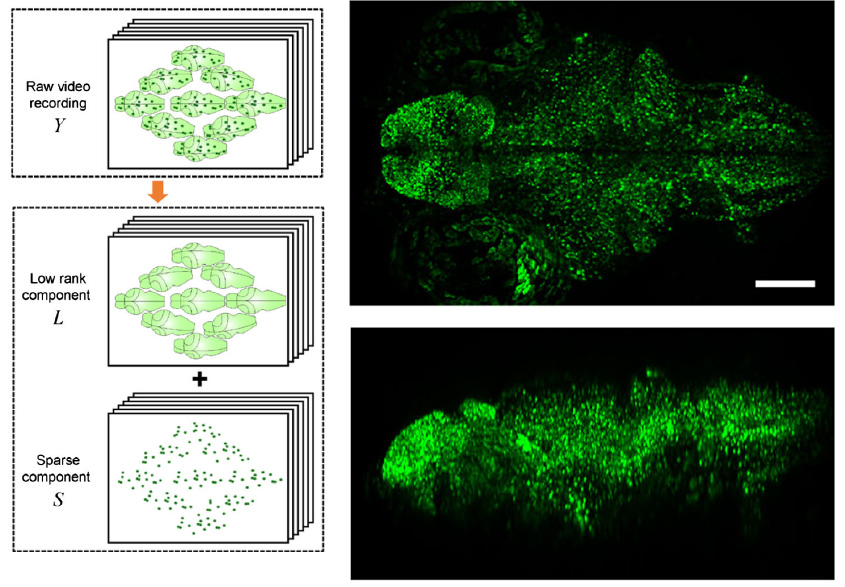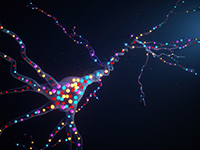
One of the major challenges in large scale optical imaging of neuronal activity is to simultaneously achieve sufficient temporal and spatial resolution across a large volume. Here, we introduce sparse decomposition light-field microscopy (SDLFM), a computational imaging technique based on light-field microscopy (LFM) that takes algorithmic advantage of the high temporal resolution of LFM and the inherent temporal sparsity of spikes to improve effective spatial resolution and signal-to-noise ratios (SNRs). With increased effective spatial resolution and SNRs, neuronal activity at the single-cell level can be recovered over a large volume. We demonstrate the single-cell imaging capability of SDLFM with in vivo imaging of neuronal activity of whole brains of larval zebrafish with estimated lateral and axial resolutions of ∼3.5µm∼3.5µm and ∼7.4µm∼7.4µm, respectively, acquired at volumetric imaging rates up to 50 Hz. We also show that SDLFM increases the quality of neural imaging in adult fruit flies.
